The Story of Ebenezer
Happy International Dinosaur Month!
Did you know that the Creation Museum in Kentucky is home to an astonishing Allosaurus fossil? In fact, it is one of the most complete Allosauruses in the entire world, and its name is Ebenezer.
But who is Ebenezer? Where was he found? And how did he die?
The story of Ebenezer is an interesting one. It begins over 4,300 years ago, just a few decades before the events of the global flood described in the Bible. You see, Ebenezer is a dinosaur, and dinosaurs are reptiles. Most reptiles—including dinosaurs—hatch from eggs. Ebenezer and his siblings would have left the nest and grown into massive 30-feet-long predators that likely lived in (or at least were buried in) what is now western North America. At the time of his death, Ebenezer appears to have been a full-grown adult, standing 10 feet high and stretching 30 feet in length. However, even this apex predator was not safe from the worldwide flood of Noah’s day.
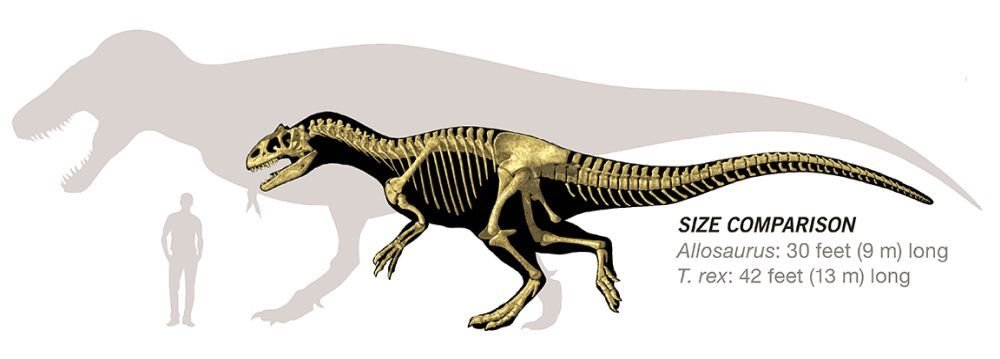
Ebenezer appears to have been a full-grown adult, standing 10 feet high and stretching 30 feet in length.
At the time Ebenezer lived, the world had become incredibly wicked and evil (Genesis 6:5) and God had to judge the world for its sin. He sent a global flood to wipe out all life on the face of the earth, except the animals which lived in the water (Genesis 6:17). Every land-dependent animal died. However, God told a righteous man named Noah to construct a large ship called an ark to save the lives of himself, his family, and a pair (seven of some) of every kind of air-breathing, land-dependent animal. This included two of Ebenezer’s kind. But Ebenezer himself was caught and killed in the water and sediment flows caused by the flood. He was buried and eventually turned into a fossil. Ebenezer would wait here for almost 4,500 years to be found. This is where the modern half of Ebenezer’s story begins.
In the year 2000, a man named Dana Forbes was walking along on his ranch near Massadona, Colorado, when he discovered part of Ebenezer’s skeleton sticking out of the ground. Years of erosion from rain had caused the sediment above the Allosaurus to be washed away, exposing part of its skeleton which was found lying on its left side. The bones of Ebenezer were fully excavated over the summers of 2001 and 2002. A fossil hunter named Joe Taylor helped lead the initial dig, and Mike Zovath and paleoartist Buddy Davis took part as well.
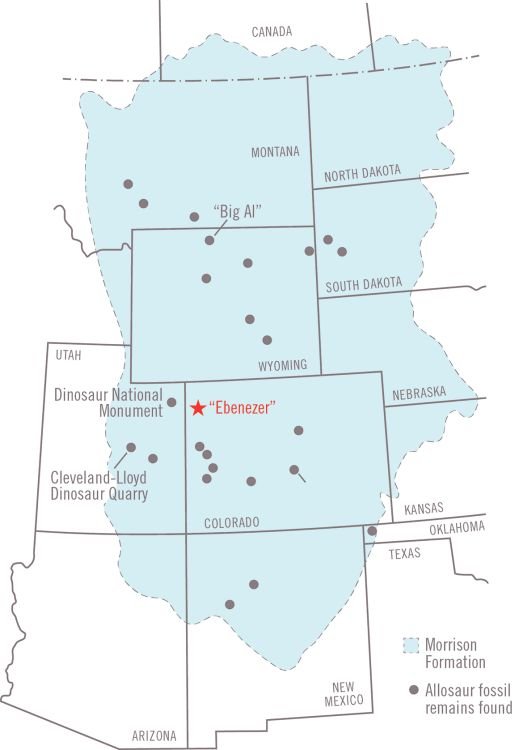
Ebenezer was discovered in northwest Colorado.
When the dust settled and all the uncovered bones of Ebenezer had been fully excavated, 56% of the entire skeleton had been recovered. This means that Ebenezer is one of the most complete Allosaurus skeletons ever found, with 139 of his 250 bones having been located—including a nearly complete skull. Remarkably, the bones of Ebenezer were not scattered around over a large area. Instead, his bones were found in their articulated (put together) position. However, his neck had been broken, likely as a result of his rapid and violent burial as a result of the global flood (Genesis 7:11–12). In addition, the right side of his skull suffered from a condition called “plastic deformation” where it had been partially caved in as a result of the heavy sediment weighing down on it.
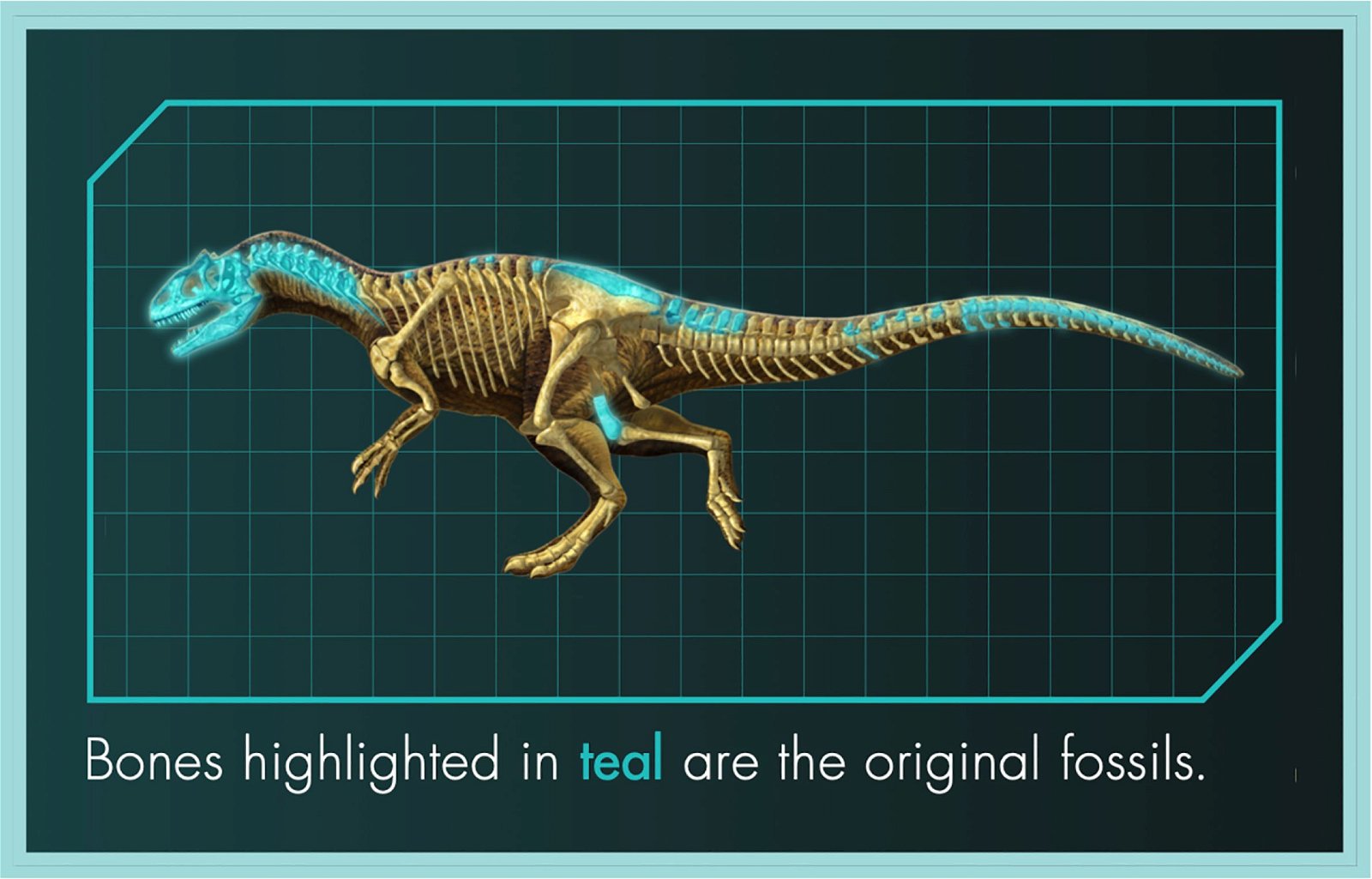
Ebenezer is one of the most complete Allosaurus skeletons ever found with 56% of the entire skeleton recovered.
The skull of this particular Allosaurus is massive! The length from the tip of the snout to the back of the skull is 34 inches. It stands approximately 22 inches high and weighs over 100 pounds! In total, the skull of Ebenezer is 97% complete. That’s amazing! In his jaws were 53 of his 80 teeth and some are up to 4.5 inches long. One of the most fascinating aspects of the find was the presence of two stick-like bones called the hyoid bones. These two bones were completely detached from the rest of the skull when Ebenezer was alive and would have helped to support his tongue. This would have helped him chew, swallow, and possibly even vocalize (make sounds). What these sounds were like, however, we don’t really know.
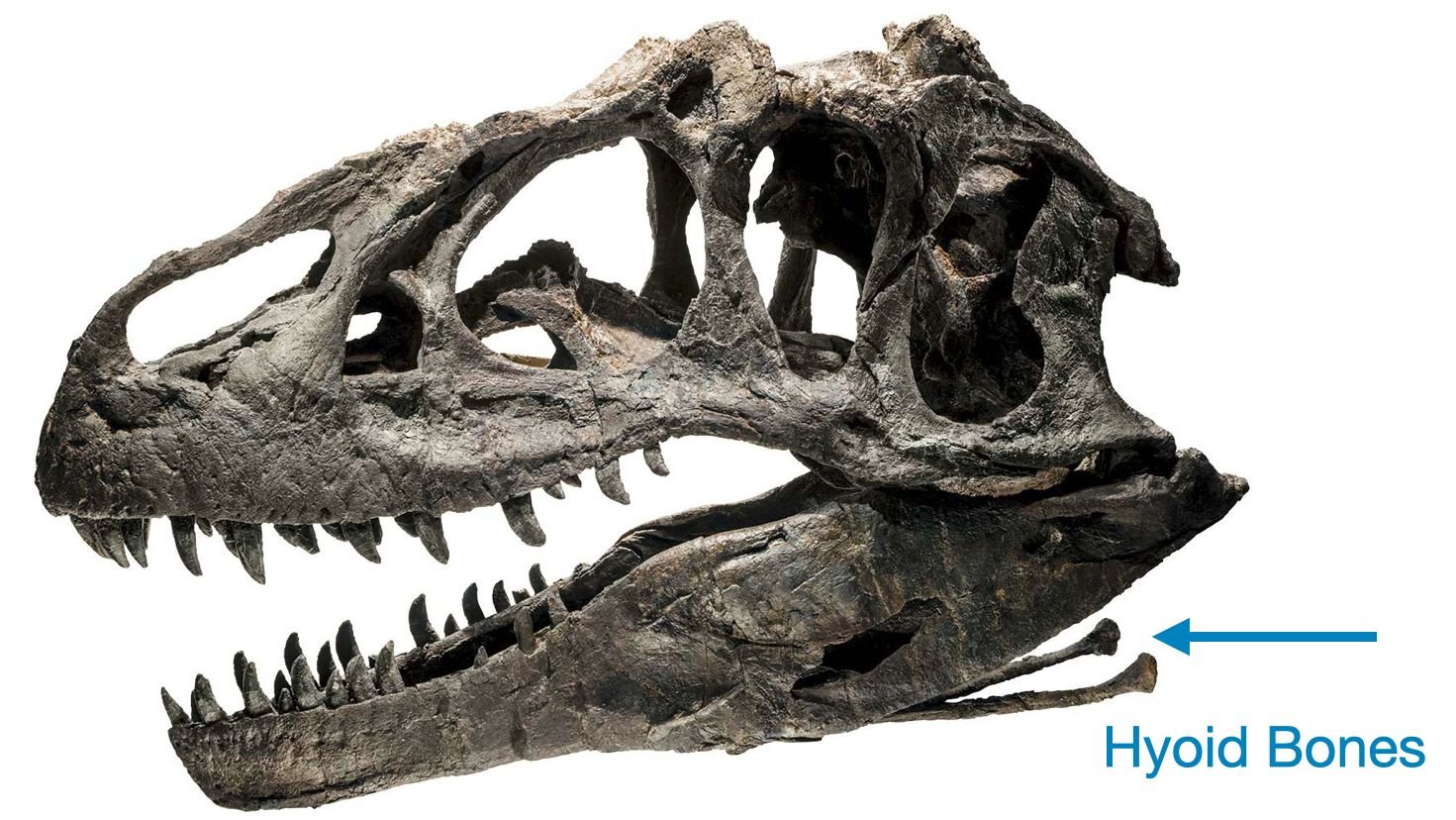
Ebenezer’s hyoid bones were also found.
Eventually, Ebenezer was donated to Answers in Genesis by the Elizabeth Streb Peroutka Foundation to be housed in the world-class Creation Museum in Petersburg, Kentucky. Facing the Allosaurus (the exhibit featuring Ebenezer) opened in 2014, and since then thousands of people have come to see and learn about this amazing fossil and the global flood that buried it.

Ebenezer is on display at the Creation Museum.
Unlike most dinosaurs, Ebenezer is being used to glorify his Creator rather than the story of evolution!
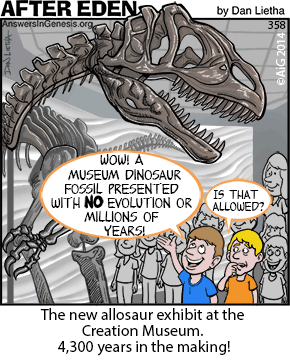
Learn more about Ebenezer in my program at the Creation Museum called “Facing the Allosaurus, a ‘Different Lizard.’"1
Footnotes
- For more details, see https://creationmuseum.org/events/workshops/facing-allosaurus/.
- © 2024 Answers in Genesis
- Privacy Policy
- Contact
- About
